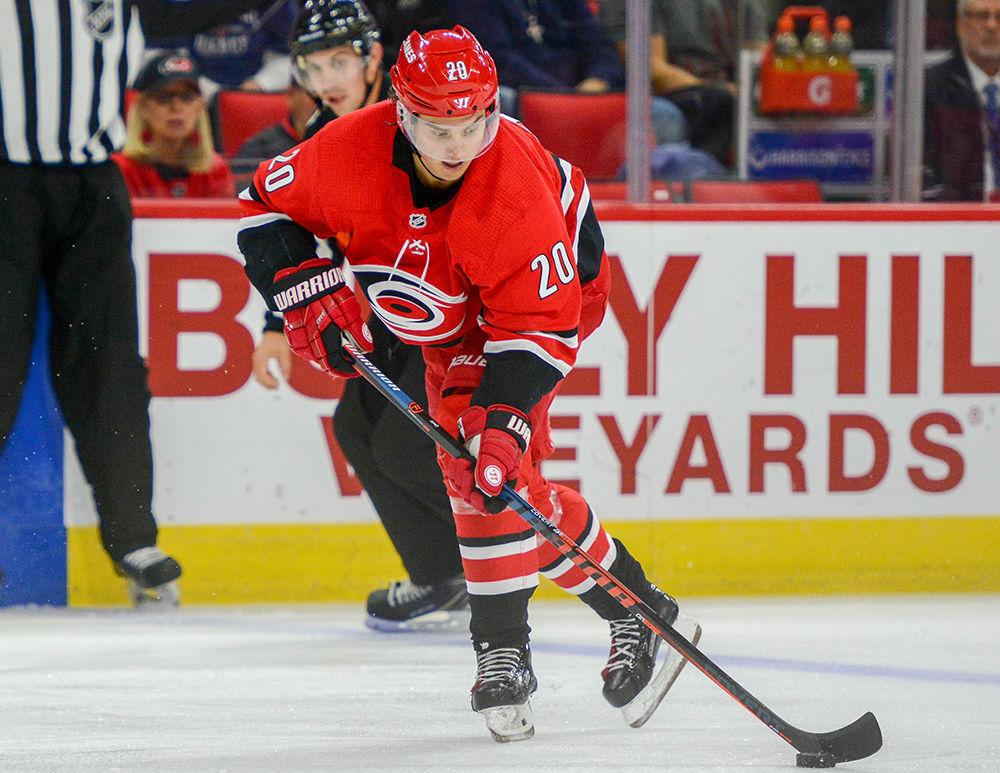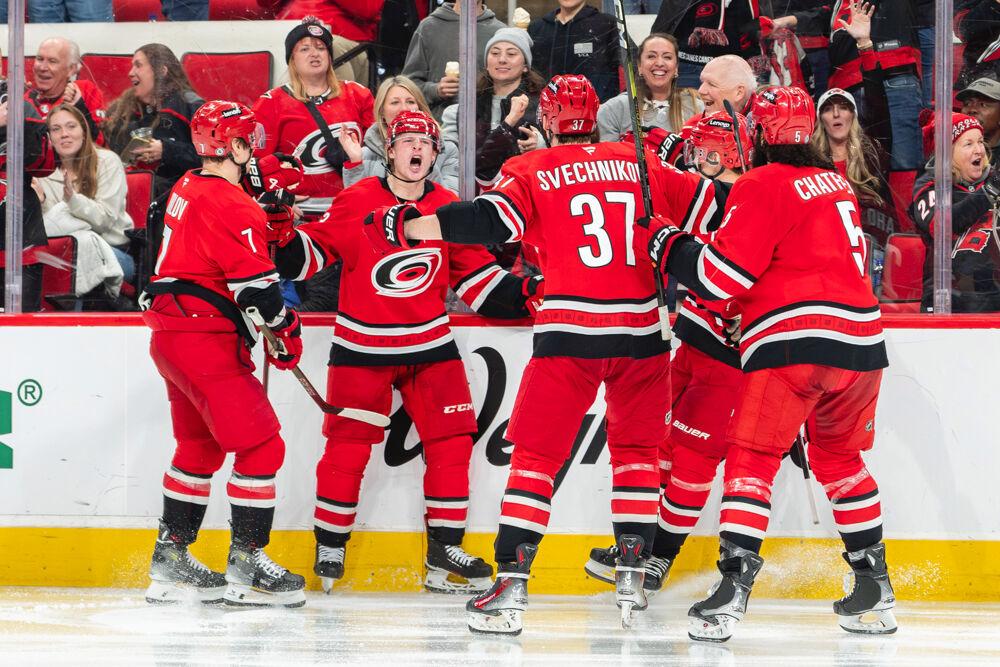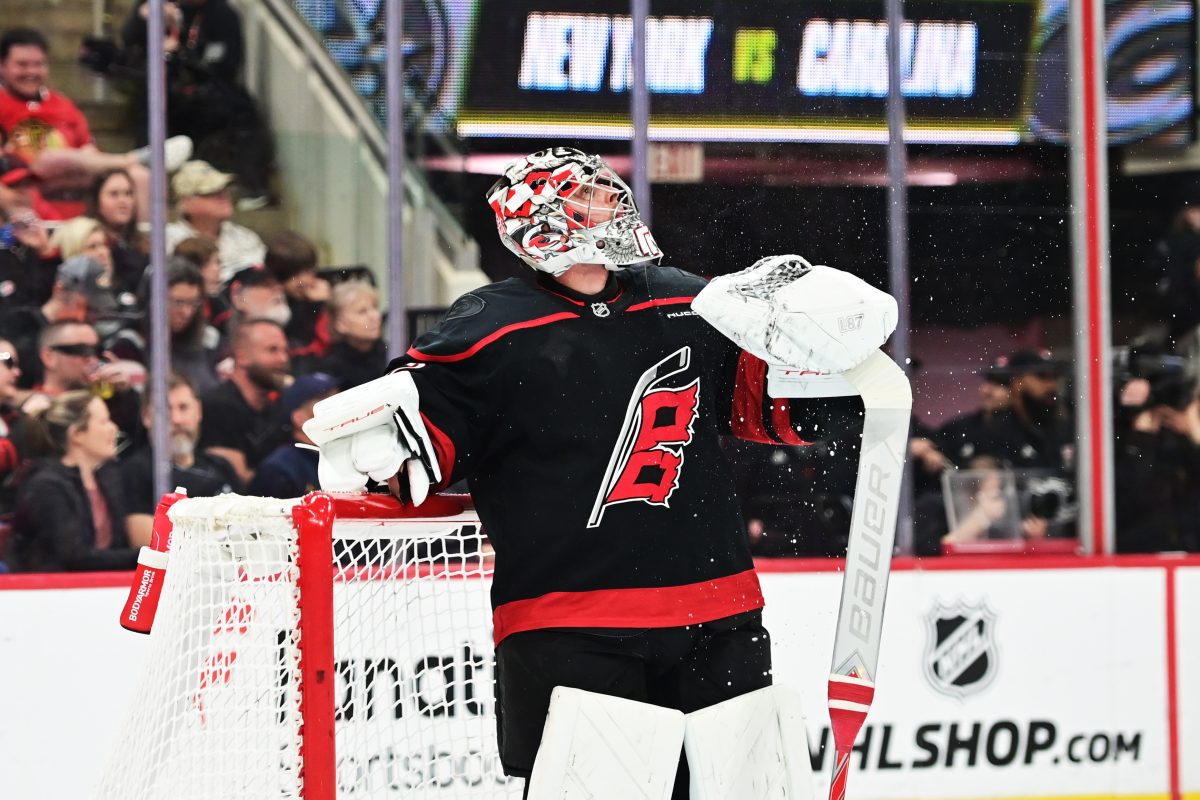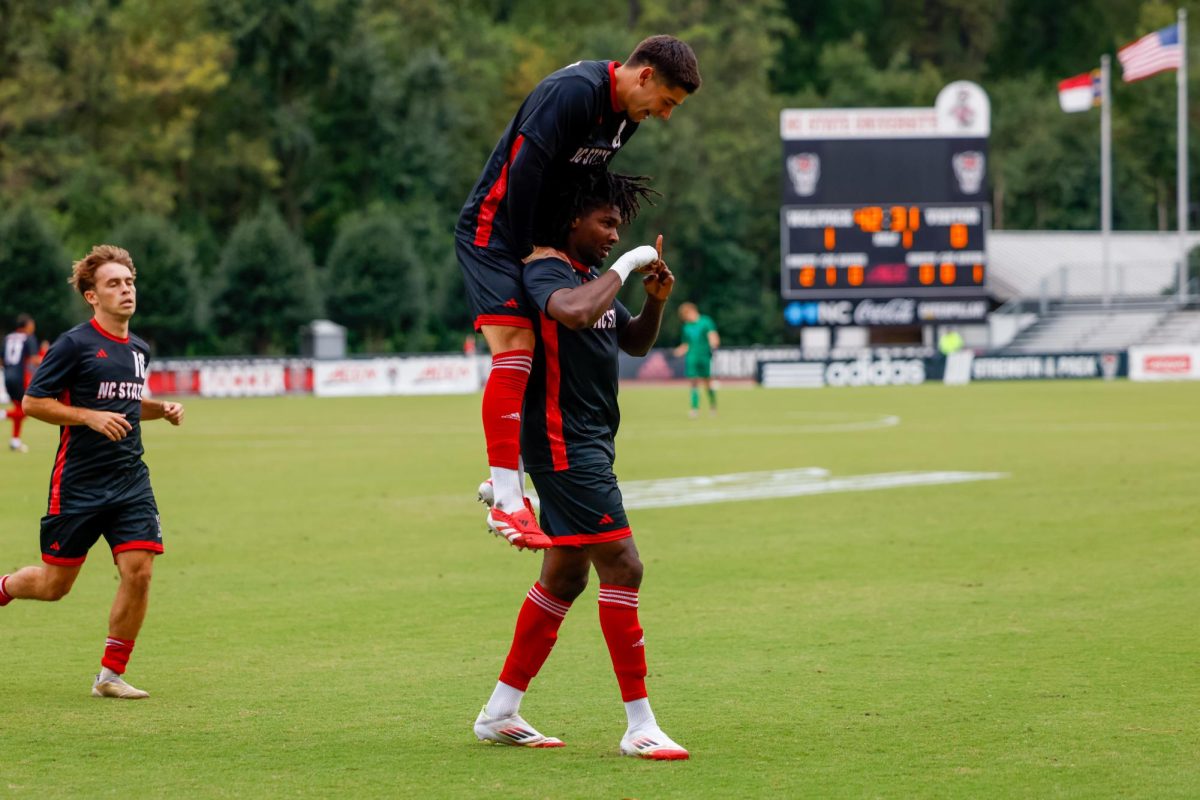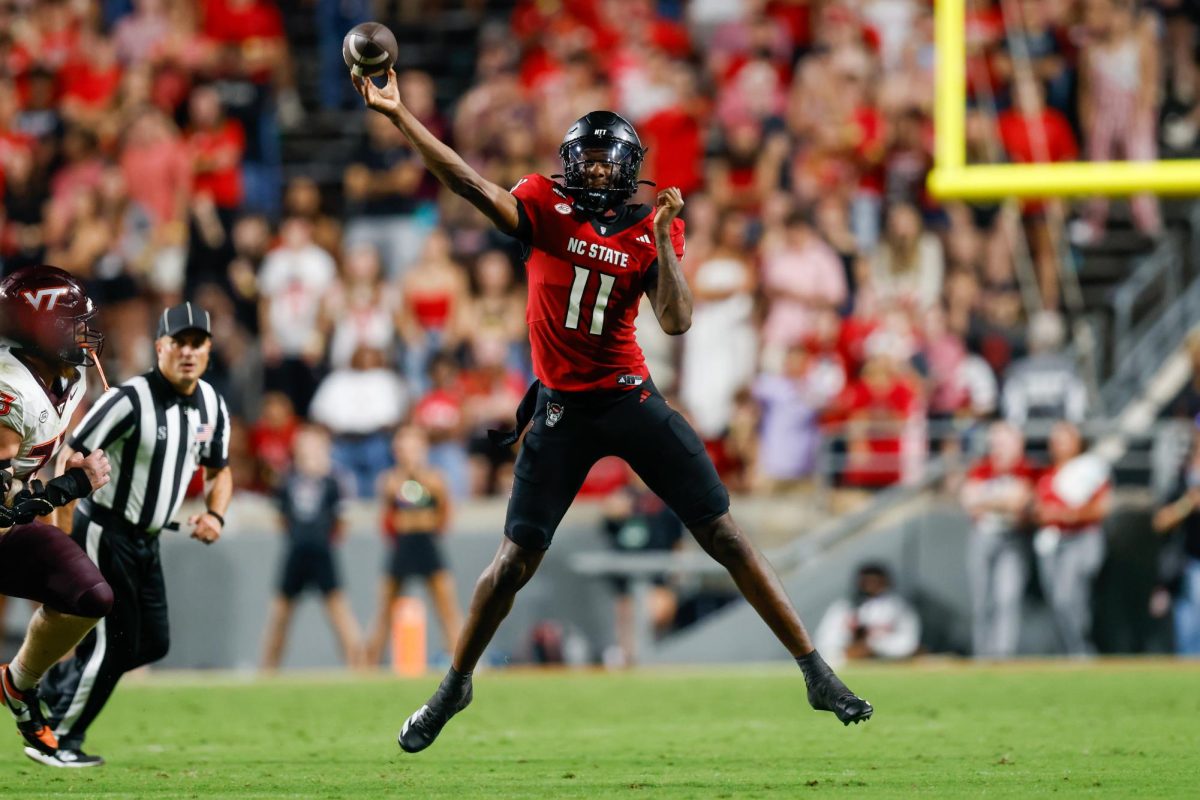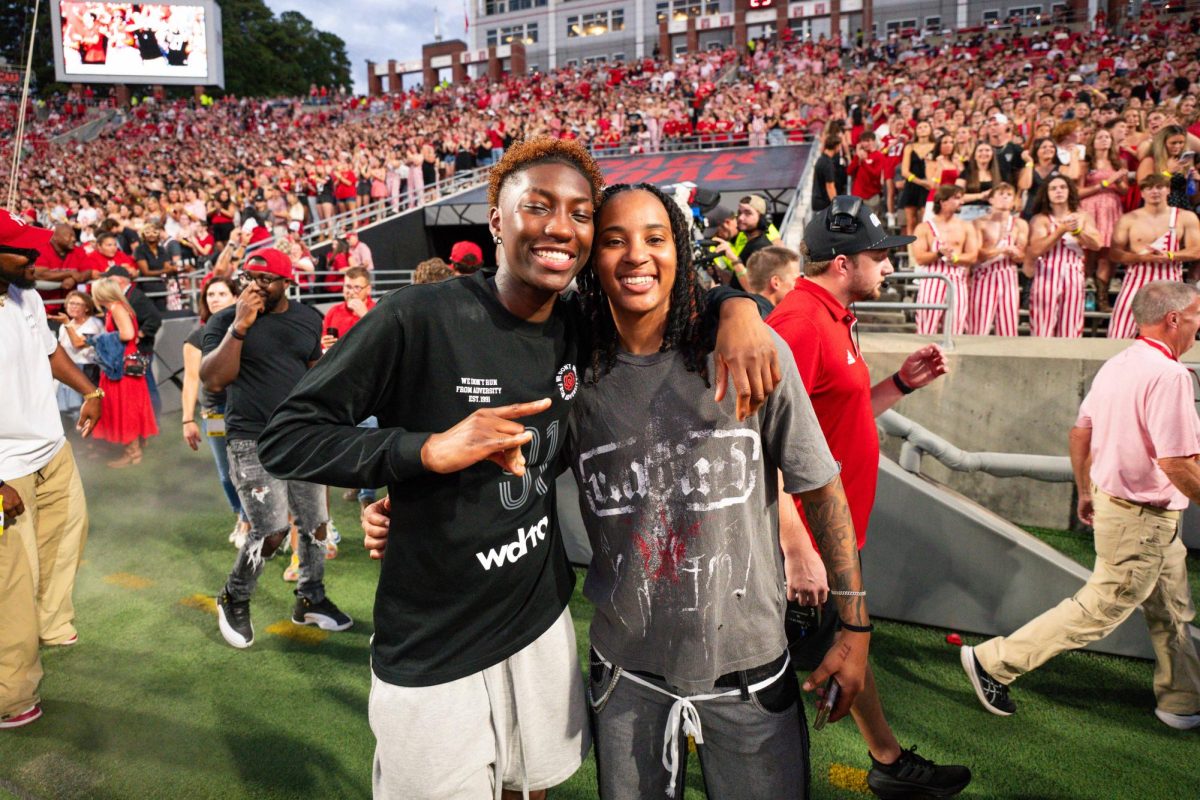The NHL’s regular season has ended, but for the first time since 2009, the Carolina Hurricanes have more games to play. With 99 standings points in the regular season, their second-highest total in franchise history, the Canes captured the first wild card in the Eastern Conference and will open their first-round playoff series against the Washington Capitals on Thursday in DC.
Before the season started, Technician posed five questions facing the team in the 2018-19 regular season that would determine their playoff fate. Let’s take a look at the answers to those questions, the biggest reasons the team snapped its nine-season playoff drought.
1. Where will the goals come from? As it turns out, all over the place. The Canes scored 243 goals this season, up 18 from the season before. There was concern that the offseason trade of forward Jeff Skinner would leave the Canes without enough offense, but breakout seasons from Sebastian Aho and Teuvo Teravainen and the offseason additions of defenseman Dougie Hamilton and forwards Micheal Ferland, Jordan Martinook and Andrei Svechnikov more than made up for it.
Aho led the Canes with a career-high 30 goals and 83 points, and the team also had four more players with 20 goals (Teravainen, Justin Williams, Nino Niederreiter and Svechnikov) and eight more with 10-plus goals (Ferland, Hamilton, Martinook, Jordan Staal, Justin Faulk, Lucas Wallmark, Brock McGinn, and Warren Foegele).
One of the biggest boosts to the Canes’ offensive attack was the highway-robbery trade with the Minnesota Wild in January that brought in Niederreiter for struggling forward Victor Rask. Niederreiter posted 14 goals and 30 points in 36 games with the Canes after the trade and was a seamless fit on the top line with Aho and Williams.
“The biggest thing is winning hockey games, and that is exactly what we did,” Niederreiter said after the Canes’ playoff-clinching win. “I came here and I wanted to help the team make the playoffs and it took every single guy to make that happen. That’s exactly what we did and that’s why we deserve to be in the playoffs.”
That balanced offensive lineup is one of the biggest reasons the Canes are going back to the playoffs.
2. Are Svechnikov and Necas ready for prime time? The answer to this one ended up being half of a yes. Going into the season, it looked like the Canes would rely on a pair of rookies in Svechnikov, the No. 2 pick in last year’s draft, and Necas, the Canes’ 2017 first rounder.
Necas played just seven games with the Canes, recording a goal and an assist, before spending the rest of the year tearing it up with the Charlotte Checkers in the AHL.
Svechnikov, however; played all 82 games for Carolina, putting up 20 goals and 37 points while showing off the power game and quick release that made him the No. 2 pick. All 20 of his goals came at even strength, leading rookies in that regard. The Canes needed Svechnikov to contribute in year one, and he did just that.
3. Adjustment period? The Canes opened the season with a new head coach in former Captain Rod Brind’Amour and a number of new faces on both sides of the ice. The Canes got off to a 4-0-1 start in October, but did struggle in the first half of the season, as the team sat at 15-17-5 and 13th in the Eastern Conference on Dec. 31.
Whether the first-half struggles were due to an adjustment period or not, the Canes more than recovered with a blistering 31-12-2 record after the calendar flipped. The leadership of Brind’Amour in his first year as head coach helped the Canes stay with their approach, and the team was rewarded with a playoff berth.
“[Brind’Amour]’s done a fabulous job with that too,” Williams said. “Absolutely fabulous. And it’s because he’s played the game, learned and he’s got an unbelievable head on his shoulders. He knows how we’re feeling. He’s done a phenomenal job for us this year. He’s a huge reason why we are where we are right now.”
4. Is the goaltending good enough? The answer to this question ended up being a resounding yes, but not in the way anyone could have expected in the preseason. The Canes were banking on a bounce-back season from Scott Darling after he struggled mightily in his first season as a starter, along with a good fit for free agent signing Petr Mrazek.
Darling had a strong preseason but ended up getting hurt in the last exhibition game, leading the team to claim Curtis McElhinney on waivers from the Toronto Maple Leafs.
Darling returned to the lineup but posted a 2-4-2 record, .884 save percentage and 3.34 goals-against average in eight starts; the Canes placed him on waivers and sent him to the AHL in November.
That move proved pivotal, as Mrazek and McElhinney provided the Canes with the steady goaltending they’ve needed for years. The Canes’ .906 team save percentage tied for 13th in the NHL, and the team gave up just 2.7 goals against per game, tied for the seventh fewest in the league.
Mrazek, in particular, is red hot going into the postseason, having won eight of his last 10 starts and posted a .951 save percentage in that span to push the Canes into the playoffs.
“Can’t say enough good things about our goaltending in general,” Brind’Amour said. “Both guys have been phenomenal all year. I think that’s one of, obviously, the biggest improvements we’ve had in the years past to this year was our goaltending was just phenomenal.”
The mantra for years had been that if the Hurricanes could just get league-average goaltending, they’d be a playoff team. That proved to be accurate.
5. Is this the year? Yes. At long last, yes. The decade of waiting for the Canes and their long-suffering fan base is over. This week, the team will play its first playoff games since the 2009 Eastern Conference Finals.
Thanks to a balanced offensive attack, steady goaltending and Brind’Amour’s leadership, the Carolina Hurricanes are going back to the Stanley Cup Playoffs.


